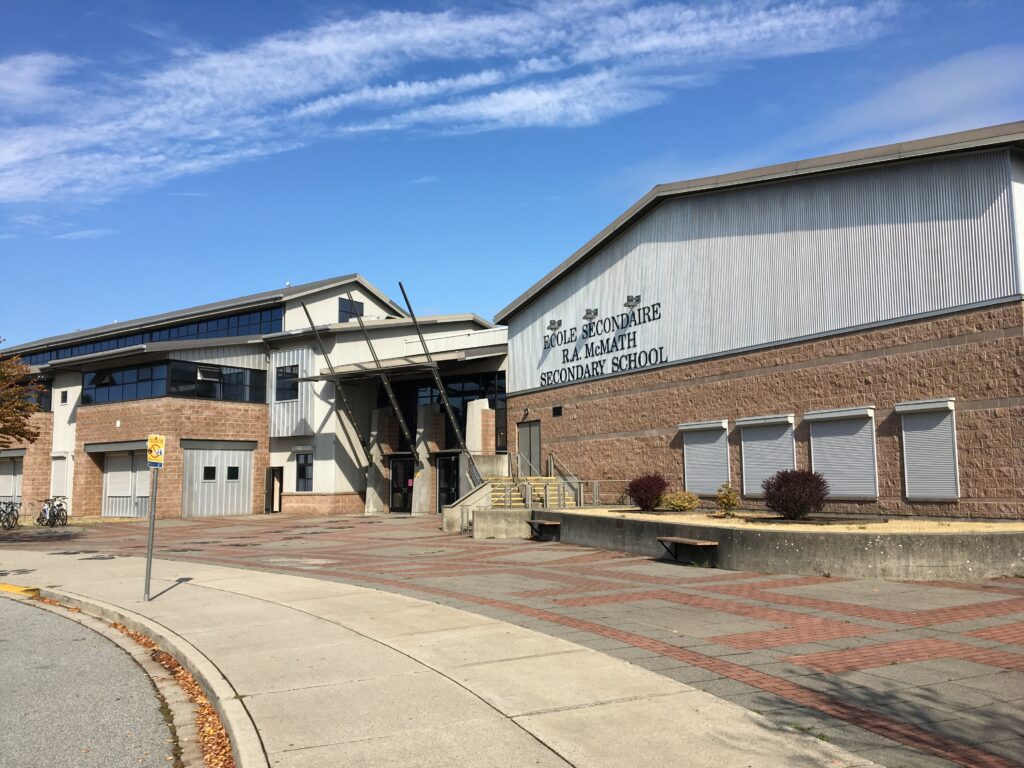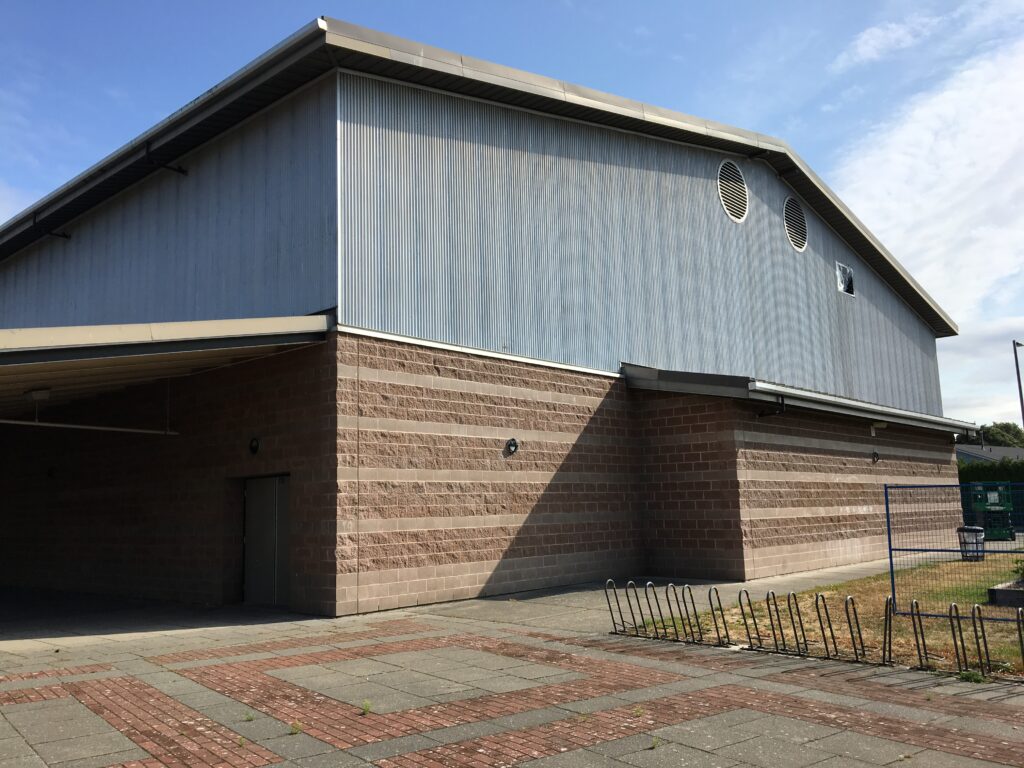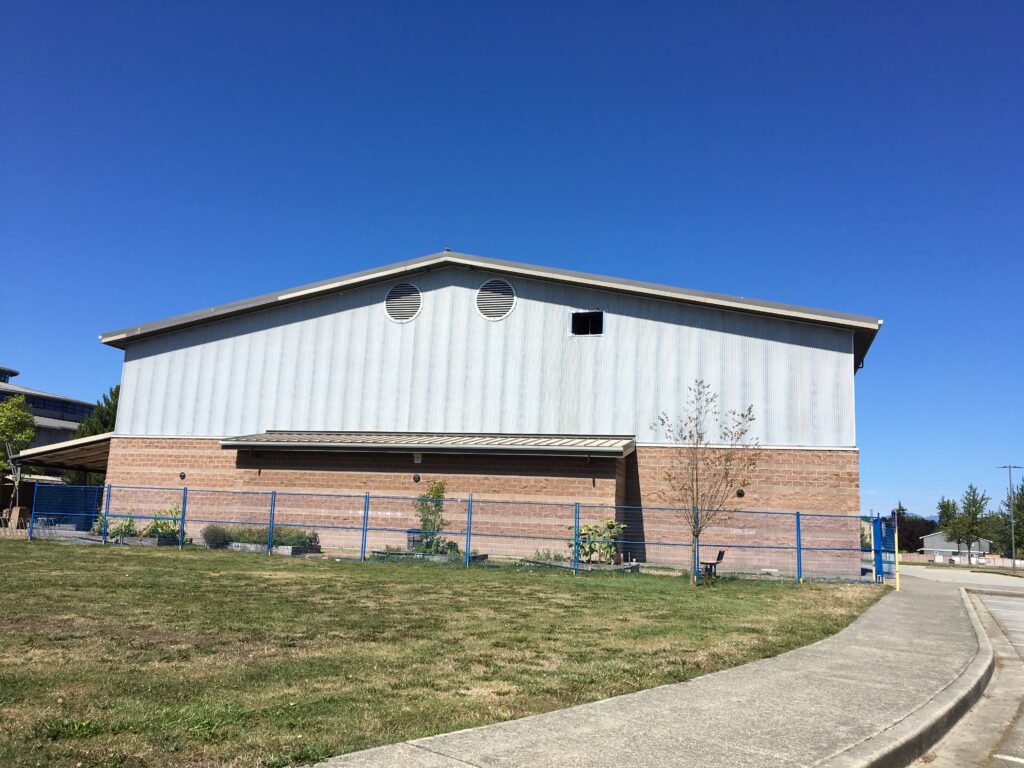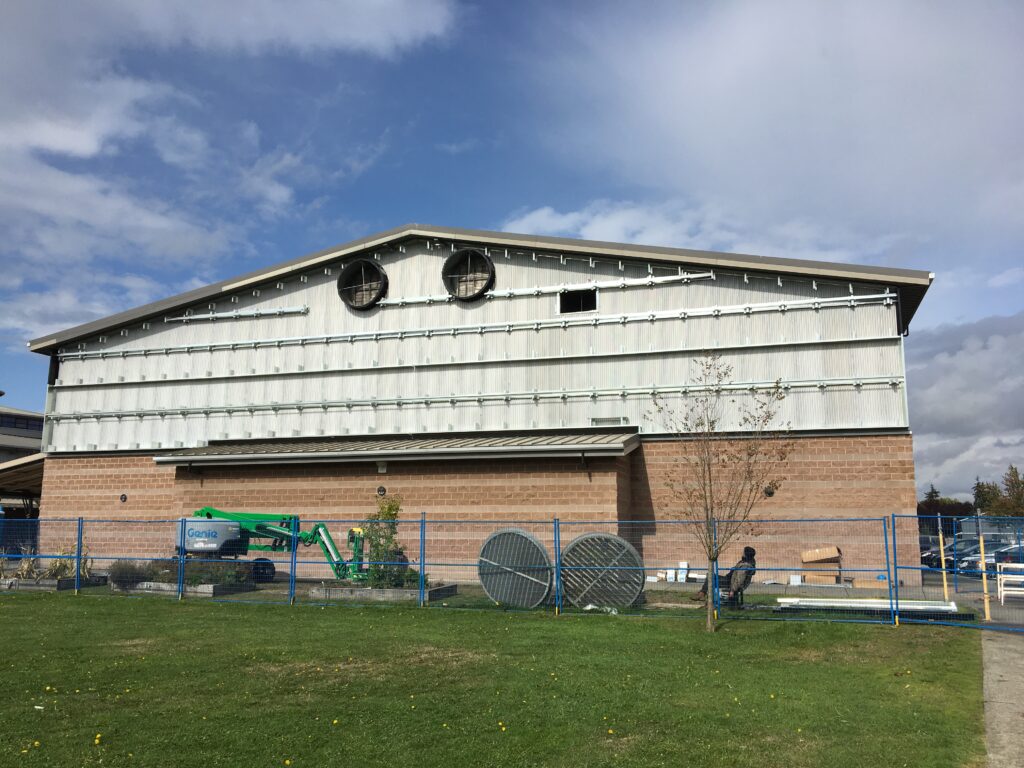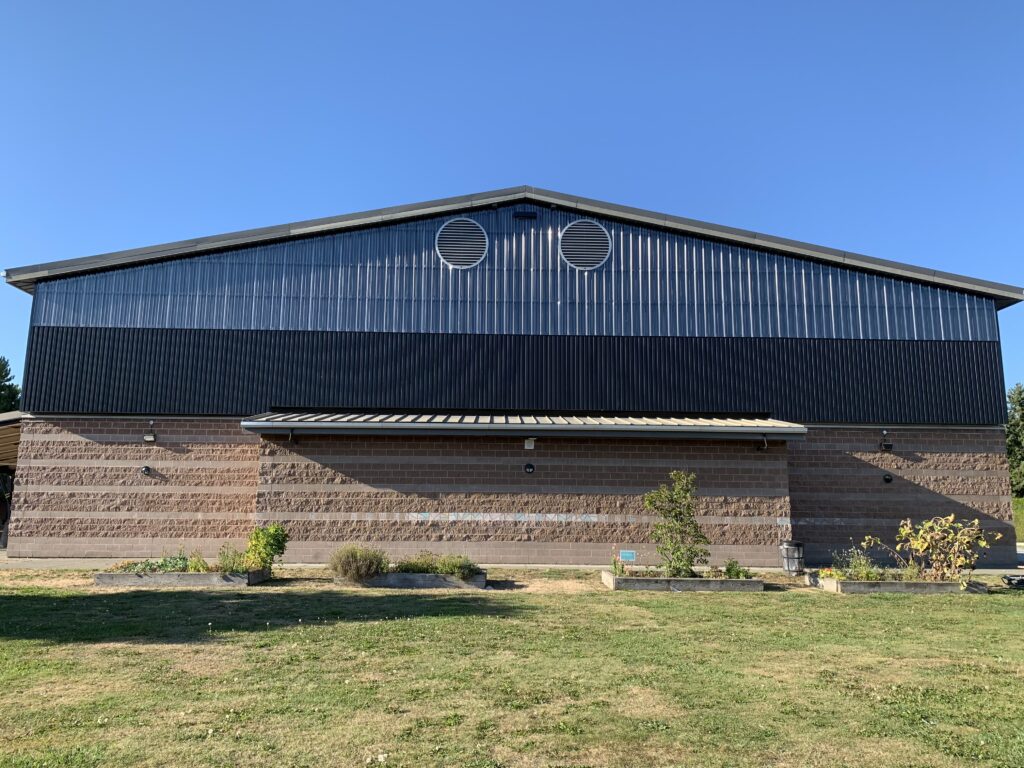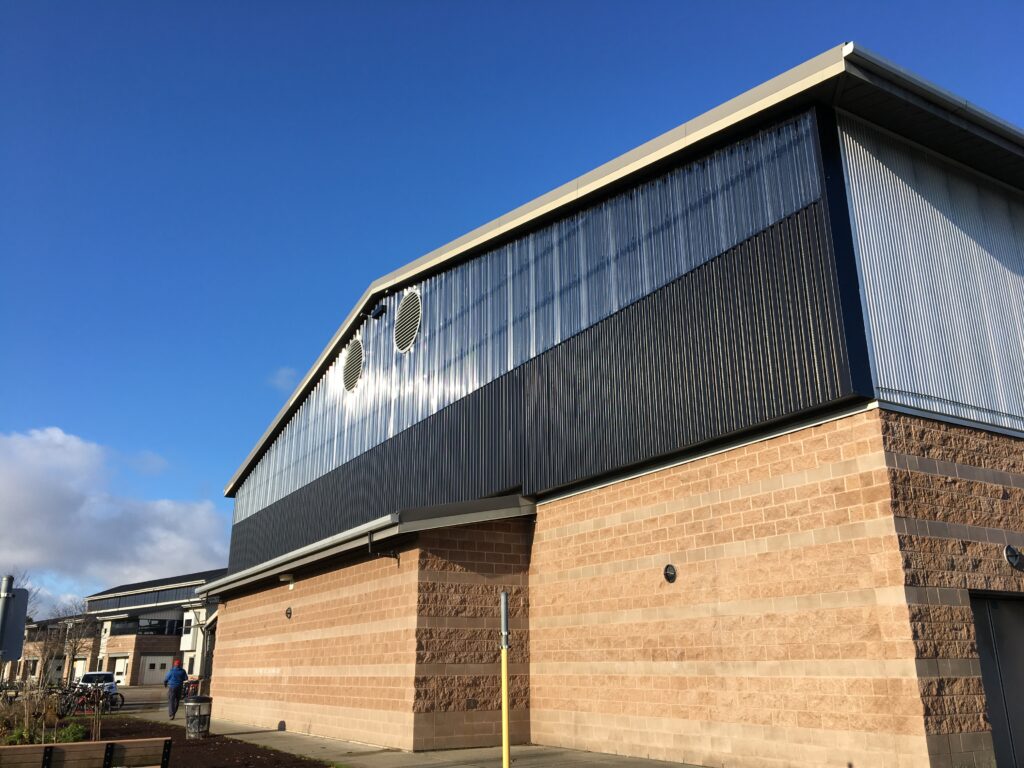
Case Study: SolarWall Installation – Richmond School District
- Case Studies
-
Aug 02
- Share post

Project Introduction:
SolarWall is an innovative solar technology that stands apart from conventional solar PV systems by seamlessly integrating solar modules with building envelopes. This cutting-edge design, merging solar technology with building facades, allows SolarWall to generate electricity while simultaneously heating or cooling buildings, providing a dual benefit of renewable energy generation and enhanced energy efficiency. With its unique ability to optimize space and maximize energy savings, SolarWall presents an enticing proposition for sites seeking to harness sustainable power while reducing their carbon footprint.
Background
Before install the School District decided to initiate a feasibility study with Rocky Point Engineering to understand the technology’s feasibility with their goals, receiving $16,000 of funding from FortisBC for the study. Once the study was completed, they moved forward with the project and received further funding of $50,000 through FortisBC’s Gas Technology Demonstration (GTD) program for reduction of natural gas.

Project Summary
Existing Building Systems
Ecole Robert A. McMath Secondary School is part of Richmond School District No. 39, located at 4251 Garry St in Richmond, BC. The facility has approximately 1,200 students and is comprised of classrooms, administrative offices, and a dedicated gymnasium building that is roughly 24,800 ft2. The SolarWall was installed on the south wall of the gymnasium building to maximize solar radiation potential. The installation began in May 2019 and was completed in November 2019.
The two-stage system was tied into the intake ducting of the gymnasium buildings two air handling units (8,500 L/s and 9,225 L/s respectively), to help preheat the incoming air supplied to the buildings two gymnasiums. The install was retrofit to the existing HVAC system and clad to the existing wall. The install required changes in the air intake for the AHUs to integrate them with the new system. For this install, minimal changes to exterior lights were required to accommodate the SolarWall installation.
Recommended Installation Conditions

Technology
A typical solar air heating system consists of collectors installed over the building’s south facing wall. These collectors are dark perforated metal plates that heat on exposure to solar radiation. This heats the air in the cavity between the old wall and collectors. This heated air is drawn into the building using fans for space ventilation or can be used to pre-heat air passing through heat recovery ventilators or warm the air coil of air source heat pumps. (Energy, 2023)

There are different solar heating installations available depending on the client requirements and building types. For all the systems in place, the collector panels utilized are made from metal which have installation, architectural, and operational flexibility. The panels also come in a variety of colours which can integrate products with different sections of the building envelope regardless of the façade systems. (Conserval, 2023) . The system chosen for McMath Secondary school was a two-stage Solar Wall Façade.
Single-stage and two-stage systems have Solar Wall facades on the buildings exterior. The façade collectors accumulate fresh heated air through absorption of solar radiations. This air is further drawn into the cavity between the solar wall panels through the perforations in the panel. The HVAC system then uses this fresh air via ducting and distributes it further ahead. During cooling season, the bypass dampers become operational, and the HVAC system reverts to its original setting.
The two-stage system works in a similar manner to the single-stage one except there are extra elements involved in the technology. As a primary step, the outside air is heated when it encounters the heated panels surface. This air is drawn through the panels’ perforations by fans inside the cavities of the panels. In the second stage, the solar radiation penetrates the polycarbonate glazing to heat the second layer of metal panels.

The heated air in the cavity undergoes second stage of heating, resulting in higher temperature air. This air is then drawn through the panel perforations further into the HVAC ventilation system.
Maintenance & Measurements
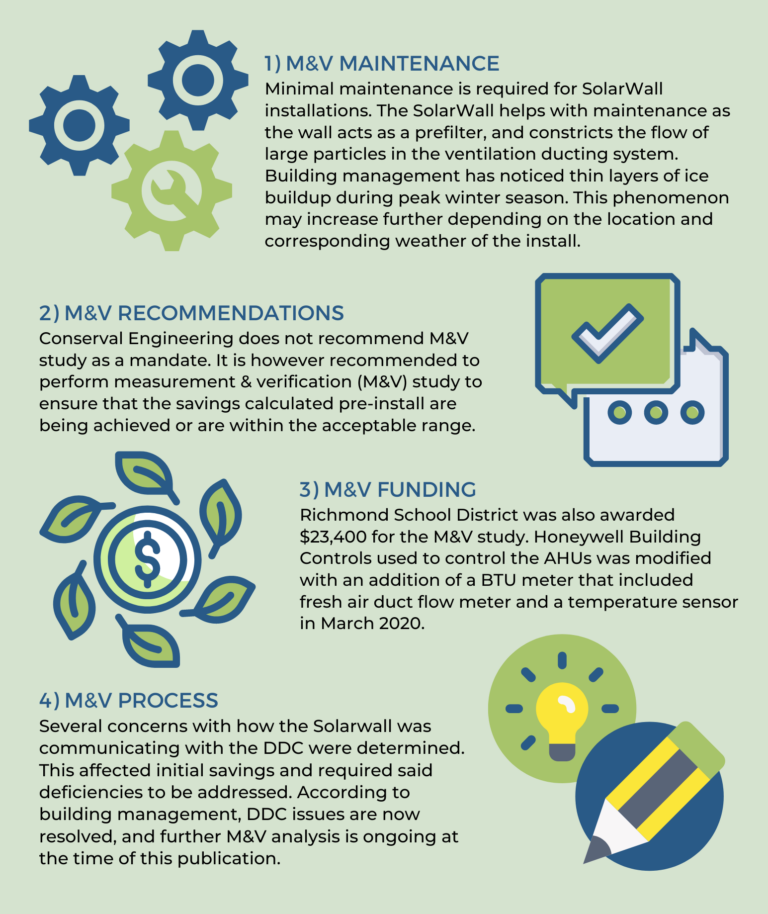
Proposed Change
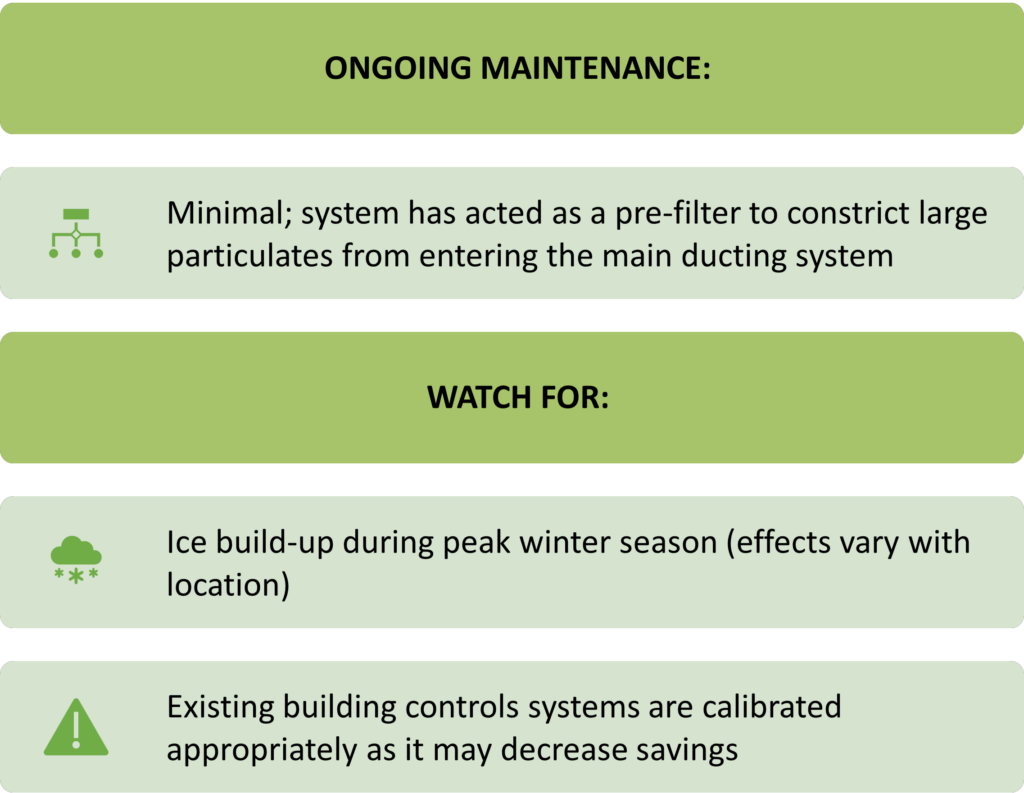
Technical Analysis
Following the installation, a measurement & verification study was conducted which utilized meter level and whole facility measurements.
The electricity and natural gas consumption of the building was analyzed from December 2019; the earliest available data range to March 2021. The overall building’s electricity and natural gas consumption was 4,797,900 kWh and 21,906.3 GJ respectively. The gymnasium’s utility consumption is not sub-metered, consequently specific consumption data for the gymnasiums is not available.
International Performance Measurement and verification Protocol (IPMVP) option A – Retrofit Isolation was chosen for primary verification. The retrofit installation for SolarWall and its associated savings and impacts were verified based on the amount of heating energy saved with the install of SolarWall. This system used measured hours of operation over the reporting period, changes in temperatures before and after the install and volumetric flow rates measured by the installed flow meter.
IPMVP option C – Whole Facility Measurement was also utilized to analyse the performance since the SolarWall would have impacted the overall school building’s performance. Since the gymnasium is not sub metered, savings post SolarWall install will affect the full facility consumption.

A regression model was established to model natural gas consumption. The model was based on daily natural gas consumption and the heating degree days. The savings were calculated based on the difference between modelled natural gas consumption and the reported values.
______________________
[1] Period of no flow excluded.
SolarWall Energy Savings & Challenges
Based on retrofit isolation, annual savings were determined to be 3.5 GJ. Occupancy changes due to COVID-19 restrictions and recommendations to increase ventilation significantly impacted the building’s energy consumption as indicated by the savings using IPMVP Option C. As a result, IPMVP Option C was ruled out as a method of analysis as the impact of the Solar Wall could not be interpreted from the overall building performance changes.

Factors that Affect Savings
Following the install of SolarWall in 2019, the school underwent COVID lockdown and occupancy dropped drastically. The school started incorporating a reduced hybrid schedule during the measurement period and, after the initial savings were calculated, eventually moved back to full time occupancy in September 2022. Consequently, the savings reported are lower than expected in the M&V report. Additional concerns were identified in relation to how the system dampers interacted with the buildings DDC systems. Solar air dampers were observed open during non-daylight hours as well as outdoor air dampers were observed open while the solar air dampers were actuating. Airflow readings were observed at zero while the solar wall damper was set to its minimum position at 10% open. Finally solar air damper was observed in its closed position when occupancy was detected by the occupancy sensor. However, DDC issues have since been addressed and further M&V reporting is in place. Further savings using the 2022/2023 school year is to be reported at end of summer 2023 to determine savings during full occupancy and without control issues.
Potential Savings Analysis
To determine SolarWalls future potential savings at McMath Secondary during full occupancy a RETScreen model was developed based on the building and equipment information. The assumptions and characteristics chosen to model the energy savings are presented below
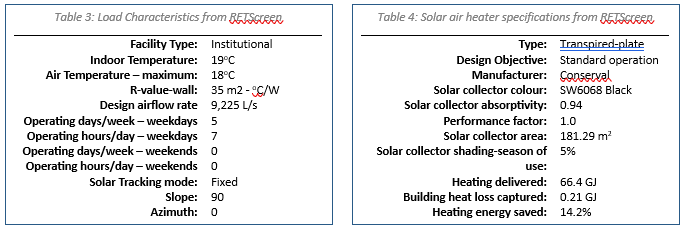

The model determined annual energy savings of 66.6 GJ and annual natural gas fuel savings system of 77 GJ, based on an 87% efficient boiler heating system. Using an average utility cost of $9.35/GJ natural gas annual savings would come out to be $722 CAD. Using current emission factors this would result in an annual GHG reduction of 3.9 tonnes CO2e.

References
Conserval. (2023). SolarWall. Retrieved June 26, 2023 from https://www.solarwall. com/industries/ commercial/
Energy, U. D. (2023). Active Solar Heating. Retrieved June 28, 2023 from https://www.energy. gov/ energysaver/active-solar-heating
Richmond School District No.38. (2023). Ecole Secondaire R.A. McMath Secondary School. Retrieved June 26, 2023, from https://mcmath.sd38.bc.ca/our-school-story
Project Photos:
